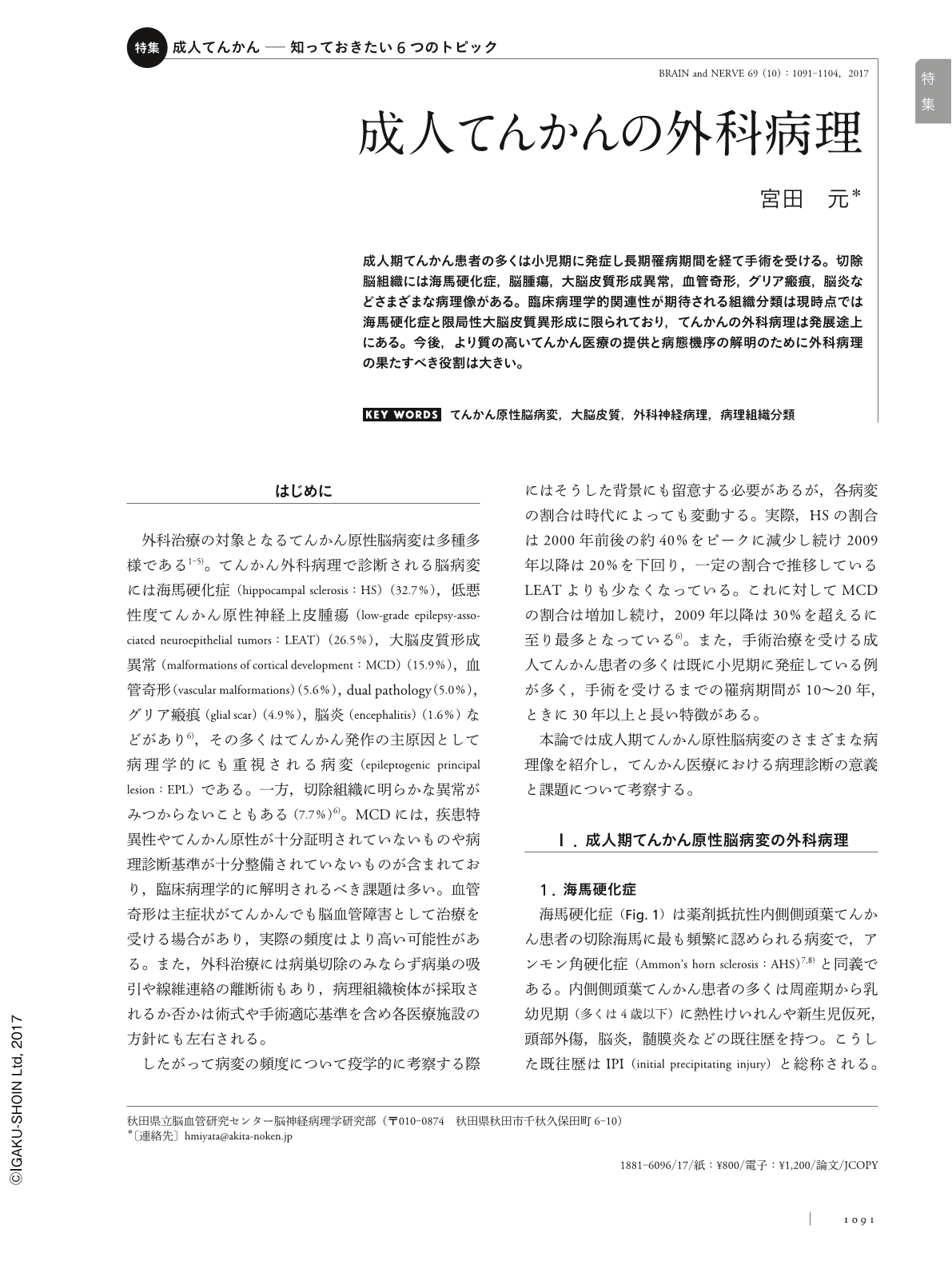Japanese
English
- 有料閲覧
- Abstract 文献概要
- 1ページ目 Look Inside
- 参考文献 Reference
成人期てんかん患者の多くは小児期に発症し長期罹病期間を経て手術を受ける。切除脳組織には海馬硬化症,脳腫瘍,大脳皮質形成異常,血管奇形,グリア瘢痕,脳炎などさまざまな病理像がある。臨床病理学的関連性が期待される組織分類は現時点では海馬硬化症と限局性大脳皮質異形成に限られており,てんかんの外科病理は発展途上にある。今後,より質の高いてんかん医療の提供と病態機序の解明のために外科病理の果たすべき役割は大きい。
Abstract
Epilepsy may be the consequence of a wide range of disorders affecting the brain, including tumors and non-neoplastic lesions. A broad spectrum of structural brain lesions can be observed in epileptogenic brain tissue specimens surgically resected from patients with drug-resistant focal epilepsies. These include hippocampal sclerosis (HS), low-grade epilepsy-associated neuroepithelial tumors (LEAT), malformations of cortical development (MCD), vascular malformations, dual pathology, glial scar, and encephalitis, as well as no lesion. HS, LEAT, and MCD constitute over 75% of all surgical pathologies of epilepsy. International consensus histological classifications of HS and focal cortical dysplasia (FCD) have been proposed by the International League Against Epilepsy (ILAE), based on agreement on the importance of defining a histopathological classification system that has a reliable clinicopathological correlation. These ILAE classifications are likely to facilitate future clinicopathological studies. The validity and usefulness of the ILAE classifications should be further evaluated for future revision for clinicopathologically meaningful classification with better interobserver agreement, particularly for FCD types I and III. Although it is still an emerging field of neuropathology, surgical pathology of epilepsy will likely play an important role in unraveling the pathogenesis and epileptogenesis of structural brain lesions, thereby contributing to the future precision medicine.

Copyright © 2017, Igaku-Shoin Ltd. All rights reserved.


